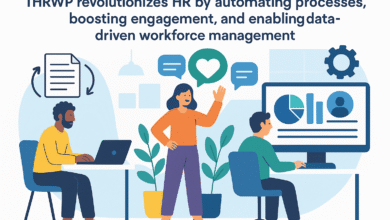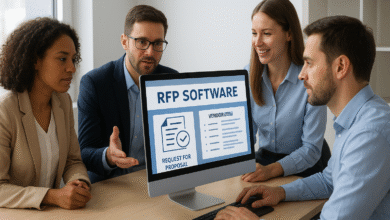How Request for Proposal Software Programs Can Streamline Business Operations

In the fast-paced world of business transactions and partnerships, the efficiency of processes like Requests for Proposal (RFPs) can set the stage for a company’s success. RFP software has emerged as a pivotal tool for organizations seeking to streamline their procurement and vendor management systems. By automating and organizing the RFP process, these software solutions enable businesses to operate more effectively, mitigate administrative burdens, and leverage data-driven insights. Whether managing complex vendor evaluations or ensuring consistent documentation, a request for a proposal software program can be crucial in enhancing overall business agility. Below, we explore the multifaceted benefits that RFP software can provide to contemporary businesses.
Key Features of RFP Software That Enhance Operational Efficiency

One of the fundamental features of RFP software is its ability to create customizable templates. These templates provide a starting point for businesses to develop consistent and comprehensive RFP documents quickly. Companies can minimize errors and omissions when creating documents from scratch by ensuring that each RFP adheres to organizational standards.
Collaboration tools are another essential feature of robust RFP software. They allow teams to work together in real time, providing visibility into each member’s contributions and comments. These collaborative functions make collecting insights and feedback from various departments easy, leading to more informed decision-making and an RFP process that harnesses collective expertise.
Data is the lifeblood of any decision-making process, and RFP software offers advanced analytics and reporting capabilities. Users can track vendor responses, analyze proposals based on predefined criteria, and generate comprehensive reports. These analytics provide a high-level overview of the procurement process, ensuring that decisions are backed by data rather than guesswork.
Finally, integration with other business systems is vital. Top-tier RFP software seamlessly integrates with CRM, ERP, and other critical systems within a company’s infrastructure. This allows for a flow of information that keeps every part of the organization in sync and enables the RFP process to benefit from existing data and workflows within the business.
Streamlining the Vendor Selection Process with RFP Software

The vendor selection process is traditionally complex and potentially prone to oversight. RFP software organizes this process by providing scorecards and comparison tools that cut through the noise. These features allow organizations to objectively evaluate each vendor based on specific criteria aligned with the company’s goals and needs.
Automation is another key aspect of streamlining vendor selection. By automating routine tasks, such as sending out notifications and follow-up reminders, businesses can focus on high-level strategic analyses of proposals instead of getting bogged down in administrative details. Further, automated workflows ensure timely and consistent processes across all vendor engagements.
Communications management within the RFP software reduces misunderstandings and errors that can arise during the vendor communication process. Transparent and centralized communication channels ensure that all queries and clarifications are documented and accessible, allowing for a transparent selection process that vendors and internal stakeholders can trust.
With RFP software, historical data on vendor performance and past interactions are readily available, which informs the selection of current prospects. Access to this historical data is invaluable in making informed choices that contribute to long-term partnerships and operational stability.
How RFP Software Improves Communication and Collaboration Among Stakeholders
Effective communication is critical when multiple stakeholders are involved in preparing and evaluating RFPs. RFP software enhances this aspect by providing centralized platforms where all the relevant parties can share information, updates, and feedback in real-time. This synchronization eliminates the siloed approach that often plagues the RFP process and ensures everyone is on the same page.
The tracking capabilities of RFP software further improve communication by allowing stakeholders to see who has contributed, when modifications were made, and what areas require attention. This heightened level of transparency builds accountability within the team and among the vendors participating in the RFP process. It also helps identify and resolve bottlenecks quickly, which can otherwise lead to delays.
RFP software also improves vendor engagement. Vendors can submit queries and receive replies within the system, ensuring all communications are recorded. This archive of interactions is essential for resolving disputes, learning from past RFPs, and maintaining an auditable trail of communication for compliance purposes.
Altogether, RFP software significantly enhances operational efficiency by automating complex processes, improving collaboration, and ensuring data-driven decision-making. By centralizing communication and streamlining vendor selection, businesses can build stronger partnerships and achieve greater transparency and consistency in procurement.



